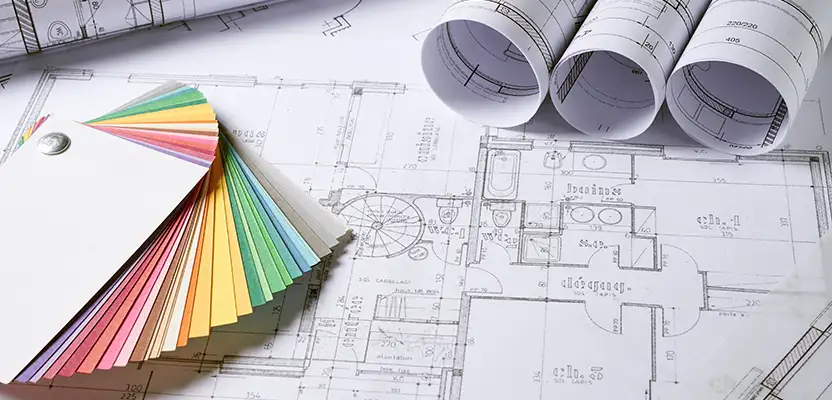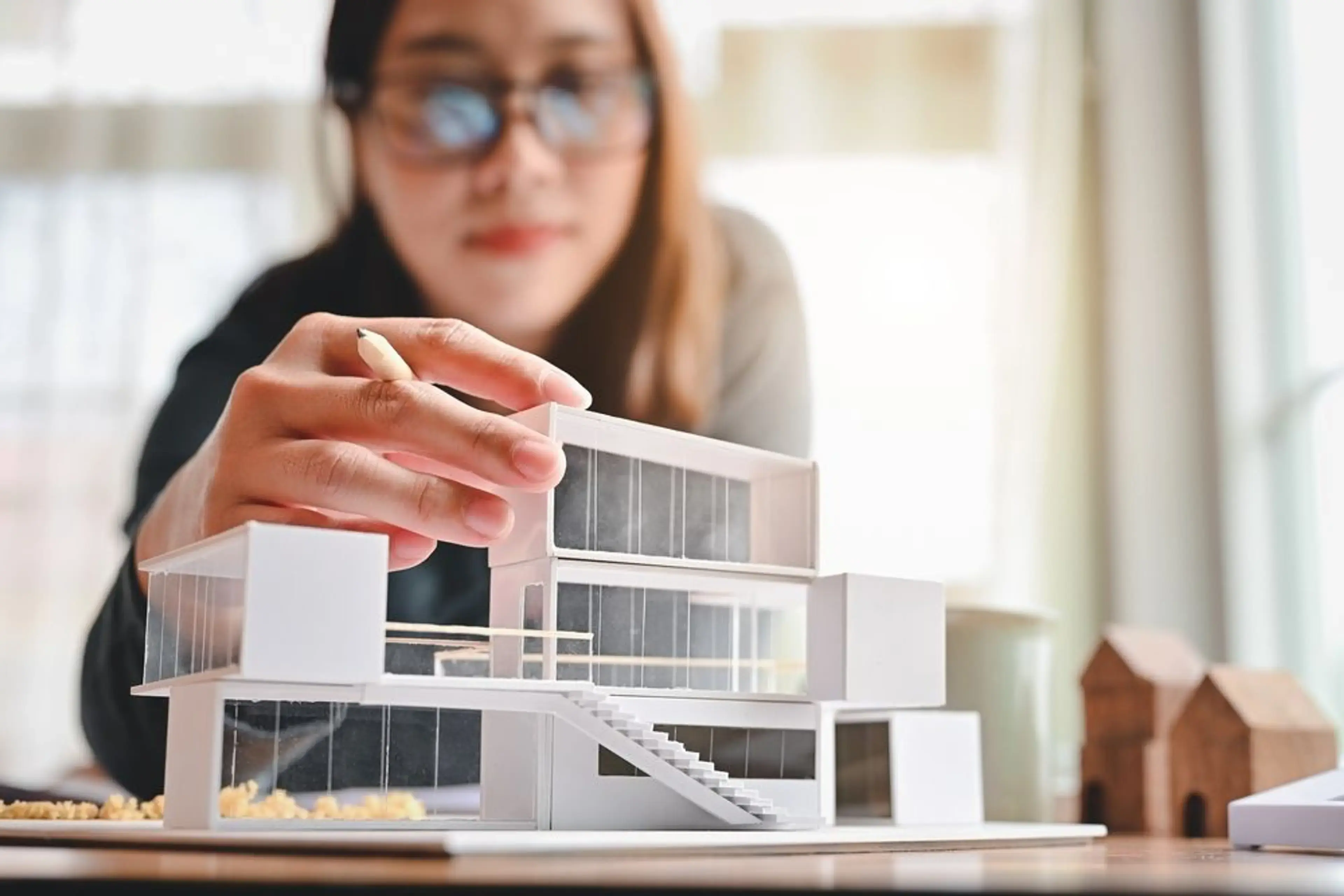Recognizing the Diverse Occupation Paths Available for Aspiring Architect
As an ambitious Architect, you have a world of occupation paths waiting for you. Each path provides distinct difficulties and chances to use your creativity and technical expertise. Whether you're drawn to standard architecture or the subtleties of sustainable style, there's a specific niche that aligns with your interests. Understanding these diverse choices can shape your professional journey, however which direction will you select to check out first?
Standard Design: Creating Structures and structures
Traditional style focuses on developing structures and structures that mix functionality with visual allure. As you explore this area, you'll appreciate the detailed equilibrium between form and purpose. You'll learn to draw motivation from historical styles, including components like balance, products, and workmanship. Your styles can show cultural heritage, showcasing local customs while satisfying modern-day demands.
You'll establish skills in composing, model-making, and site analysis, enabling you to picture and interact your ideas efficiently. Engaging with customers, you'll require to comprehend their vision and translate it right into viable styles.
Additionally, building codes and sustainability techniques are essential in your job, ensuring your structures are secure and eco-friendly. As you expand in your profession, you'll find possibilities in property, commercial, or perhaps repair jobs, each offering one-of-a-kind obstacles. Accepting traditional style paves the means for a satisfying career that admires the past while shaping the future.
Urban Preparation: Shaping Neighborhoods and Public Spaces
As an aspiring Architect, you can play a vital duty as a metropolitan organizer, transforming just how communities interact and function. By using neighborhood involvement methods, you'll guarantee that homeowners have a voice in forming their environment. Plus, incorporating sustainable style concepts will assist develop spaces that not only meet today's requirements yet likewise shield the future.
Role of Urban Planners
While lots of could consider designers as the single visionaries behind buildings, city planners play an essential function fit the more comprehensive landscape of neighborhoods and public areas. They assess land use, zoning legislations, and area requires to create sustainable environments that improve top quality of life. By teaming up with various stakeholders, you'll help develop parks, transport systems, and household areas that promote social interaction and availability. Urban organizers additionally concentrate on environmental considerations, making certain that developments incorporate environment-friendly areas and support biodiversity. Your expertise in spatial layout and neighborhood dynamics permits you to visualize future development while maintaining social heritage. In this important duty, you'll straight affect just how individuals experience their surroundings, making every job a chance for favorable modification.
Neighborhood Engagement Approaches
Efficient neighborhood involvement strategies are important for metropolitan coordinators to assure that the voices of homeowners are heard and valued in the planning process. To foster significant dialogue, you must focus on open forums and workshops where community members can express their ideas and concerns. By actively incorporating and listening feedback, you'll create areas that show the neighborhood's requirements, eventually leading to more successful and sustainable city settings.
Lasting Style Principles
When creating urban rooms, integrating sustainable layout principles is essential for developing atmospheres that flourish both environmentally and socially. Think about integrating environment-friendly spaces, like gardens and parks, to enhance biodiversity and enhance air quality.
Creating with water conservation in mind is additionally essential-- assume regarding rainfall gardens and absorptive surfaces to take care of stormwater. Including area members throughout the planning procedure guarantees that the areas you create satisfy their demands and motivate social communication. By embracing these concepts, you'll add to dynamic, lasting urban landscapes that profit every person.

Landscape Design: Producing Lasting Exterior Atmospheres
As you explore landscape style, you'll find essential layout principles that develop lovely and practical outside spaces. Lasting practices play a vital duty in ensuring these environments prosper while lessening environmental influence. Plus, you'll locate a selection of career opportunities that permit you to make a genuine difference in just how people communicate with nature.
Style Concepts in Landscape
Comprehending style principles in landscape design is crucial for developing lasting exterior atmospheres that balance with nature. You'll require to consider aspects like scale, proportion, and equilibrium to ensure your designs feel natural and inviting. In addition, pay interest to seasonal changes, making with materials that complement the environments year-round.
Sustainable Practices Introduction
Sustainable techniques in landscape architecture not just concentrate on looks yet additionally focus on eco-friendly health and source preservation. By integrating indigenous plants, you boost biodiversity and lower the Bonuses requirement for chemical fertilizers and chemicals. Applying effective irrigation systems aids save water and reduces runoff, shielding close-by communities. You can develop spaces that advertise dirt health and wellness, such as exercising and using natural products permaculture principles. In addition, integrating eco-friendly framework, like rain yards and porous sidewalks, aids in stormwater monitoring and decreases city heat. You contribute to a healthier world and give spaces that foster neighborhood link when you develop outdoor settings with sustainability in mind. Eventually, these practices guarantee your styles profit both individuals and the setting for many years to find.
Occupation Opportunities Expedition
With a strong structure in lasting practices, landscape style uses a variety of job paths that allow you to make a purposeful effect on the environment. Urban coordinators typically team up with landscape architects to produce green areas in urban setups, enhancing city livability. If you're enthusiastic about education and learning, consider coming to be a landscape design instructor, inspiring future generations.
Lasting Design: Concentrating on Eco-Friendly Practices
As you explore your occupation in style, accepting environmentally friendly techniques can set you apart in a competitive area. Sustainable style concentrates on creating buildings that decrease environmental effect while boosting resident wellness. By including renewable materials, energy-efficient systems, and lasting structure techniques, you'll add to a greener future.
Beginning by gaining understanding of environment-friendly certifications like LEED or BREEAM, which can reinforce your qualifications. Take into consideration how natural light, ventilation, and thermal performance can maximize design. Collaborate with engineers and ecological professionals to innovate services that decrease waste and conserve resources.
Do not forget the relevance of community involvement-- engaging local stakeholders can influence styles that balance with the setting. As customers significantly focus on sustainability, your proficiency in environment-friendly techniques will certainly not just bring in tasks yet additionally fulfill your passion for responsible style. Welcome this crucial facet of the career, and see your job prosper.
Historical Conservation: Safeguarding and Restoring Social Heritage
While you start on your building journey, consider the important role of historical conservation in preserving our cultural heritage. This field concentrates on the defense and repair of considerable buildings, websites, and frameworks that tell the stories of our past. By participating in historic preservation, you'll aid secure the architectural legacy that forms neighborhood identity.
As a historical preservation Architect, you'll evaluate historic importance and assess the problem of structures. You'll function closely with preservationists and historians to assure authentic repair techniques are used. This career course allows you to blend creative thinking with research study, allowing you to develop remedies that respect original products and craftsmanship.
Your work not just contributes to sustainability by recycling existing structures yet also fosters a sense of satisfaction within neighborhoods. Welcoming this path will aid you become a guardian of history, maintaining the stories and appearances that enrich our lives.
Interior Style: Enhancing Indoor Spaces
Historical preservation and interior style both share a dedication to enhancing the developed setting, yet they concentrate on different elements. While historical conservation emphasizes maintaining a structure's social and historical value, interior design absolutely nos in on maximizing indoor spaces for performance and looks.
As an ambitious Architect, from this source you'll find that interior architecture enables you to blend imagination with technological abilities. You'll make rooms that not just look excellent but also promote comfort and efficiency. This field involves understanding how light, color, and materials interact within a space, affecting mood and use.
You'll deal with numerous tasks, from household homes to business workplaces, making sure that each atmosphere satisfies the requirements of its residents. By prioritizing user experience, you can transform insides right into motivating and practical spaces, making a substantial influence on just how people communicate with their surroundings. Welcome the possibility to improve indoor environments and check over here form the method people live and work.
Industrial Style: Combining Functionality With Aesthetics
Industrial layout plays an important function in producing products that flawlessly blend aesthetic appeals with capability, ensuring that what you utilize everyday is not just aesthetically appealing yet likewise practical. As an ambitious Architect, you can engage on your own in this field, focusing on creating whatever from furnishings to consumer electronic devices. Your work entails comprehending user requirements, materials, and producing procedures, enabling you to develop ingenious remedies that improve day-to-day experiences.
In industrial style, you'll usually team up with manufacturers, marketing experts, and designers, making certain that your styles are not only gorgeous but also viable. This job course provides a dynamic environment where creative thinking meets usefulness, making it a fulfilling selection for designers interested in shaping the items of tomorrow.
Regularly Asked Inquiries
What Educational Certifications Do I Need to End Up Being an Engineer?
To end up being an architect, you'll need a professional degree in style, typically a Bachelor's or Master's. In addition, you'll need to complete a teaching fellowship and pass the Architect Enrollment Assessment to practice legitimately.
Are There Certification Demands for Different Building Career Paths?
Yes, there're qualification demands for numerous architectural courses. Architect. You'll need to pass tests, total teaching fellowships, and in some cases seek specialized training, depending upon your picked focus, like landscape style, urban style, or historic preservation
What Software Program Skills Are Crucial for Designers Today?

How Can I Gain Practical Experience While Researching Architecture?
You can obtain functional experience by interning at architectural companies, taking part in style competitions, offering for community jobs, or collaborating with schoolmates on real-world assignments. These chances enhance your skills and construct important links in the industry.
What Work Opportunities Exist Outside Standard Style Firms?
You can explore numerous job chances outside typical design firms, like metropolitan preparation, interior decoration, landscape design, building and construction management, property development, or perhaps roles in sustainability consulting. Each deals special difficulties and rewards.
Whether you're attracted to traditional style or the nuances of lasting layout, there's a niche that lines up with your passions.When designing city spaces, integrating lasting style principles is crucial for creating environments that flourish both environmentally and socially.As you explore landscape architecture, you'll find necessary style concepts that create stunning and practical outdoor areas.Recognizing layout concepts in landscape style is important for developing sustainable exterior settings that harmonize with nature.In industrial layout, you'll frequently work together with producers, designers, and marketing professionals, making sure that your designs are not just gorgeous yet likewise practical.